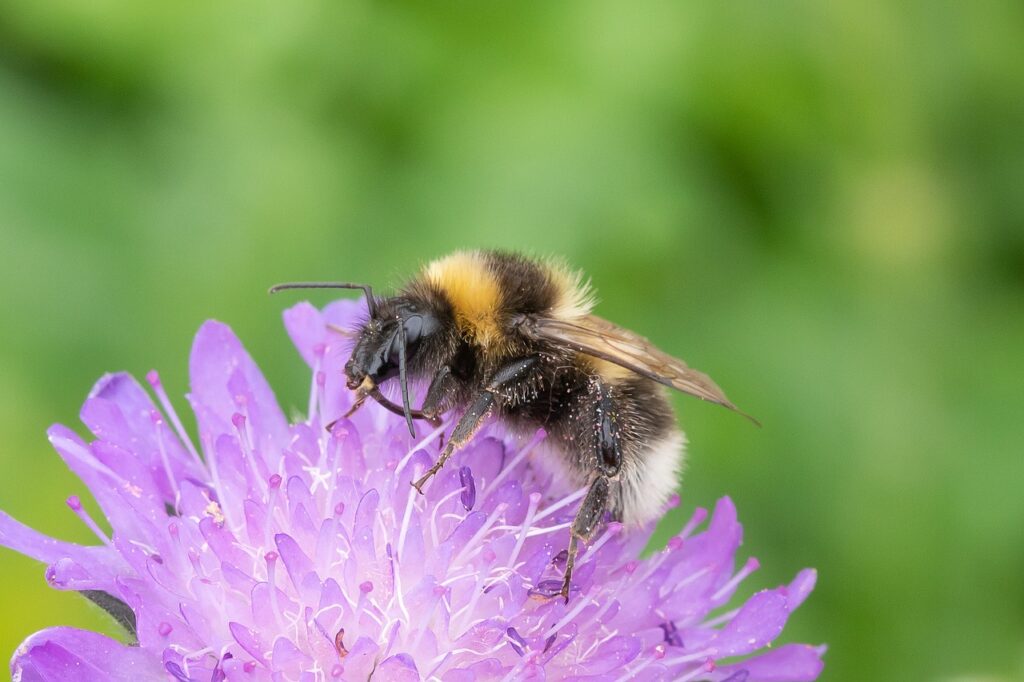The ability to find their way home after foraging is crucial for many animals. The complexity of natural environments can make it a challenging task, being confronted with a large variety of stimuli. For bumblebees, it’s not only their excellent vision that helps them return to their nest but also their advanced sense of smell, according to a new study.

A team of researchers from Bielefeld University in Germany found bumblebees use their sense of smell to locate their nests. This is especially important when the landscape suddenly changes, such as when familiar visual landmarks are blown away by the wind. The results were published in the journal Frontiers in Behavioral Neuroscience.
Bumblebees, belonging to the genus Bombus within the bee family Apidae, are known for their distinctive buzzing sound, black and yellow body hair and important role in the environment. They are pollinators, meaning they help plants reproduce, and can be found almost on every continent and across a wide range of habitats, from forests to the arctic tundra.
They have a pair of compound eyes that distinguish most colors except red and three additional simple eyes that can detect polarized light. However, it’s not just their vision that’s impressive but also their sense of smell. It’s about 100 times more sensitive than ours and can take on many tasks, from sniffing drugs to detecting diabetes.
“Here we show that bumble bees rely on their own scent marks, which they deposit at their nest entrance while leaving for a foraging trip, to find back home when the visual cues are not sufficiently reliable,” first author Sonja Eckel, a Ph.D. student at the Department of Neurobiology of Bielefeld University in Germany, said in a statement.
The impressive bumblebees
In their study, the team looked at the homing behavior of the buff-tailed bumble bee (Bombus terrestris). In their natural habitat, these bees establish nests in abandoned mouseholes hidden under grass or leaves. In the experiment, the bees had learned to locate the entrance of their nest by visually orienting themselves using two sets of landmarks.
The first set consisted of three black vertical stripes, each 12 cm wide and 85 cm long, against the white background of the arena walls. The second had three cylinders arranged in a triangular pattern around the entrance hole, with each cylinder measuring 2.5 cm in width and 15 cm in height. The floor of the arena didn’t provide visual cues.
Bumblebees have multiple scent glands that distribute chemicals throughout their bodies. Previous research has shown that these bees passively leave scent marks whenever they come into contact with surfaces. To capture these, the team placed a glass ring around the entrance, which the bees tended to walk across when exiting or returning to the nest.
The researchers then deceived the bumble bees by suddenly relocating both sets of visual landmarks, independently of each other. As a result, the landmarks no longer indicated the correct location of the entrance. The actual entrance was closed off. They observed how long the returning bees hovered around each false location.
They hypothesized that the longer a bee lingered around a particular spot and the closer it flew to that spot on average, the more likely it was that the bee considered it the most promising candidate for the entrance’s location. Typically, the bees appeared to be equally focused on both false locations, indicating that they attempted to use both sets of landmarks.
However, a significant change occurred when the researchers placed the glass ring, which carried bumble bee scent marks. In such cases, the bees concentrated their attention on the false location associated with the scent marks. This suggests bees use both their sense of smell and vision to navigate their way back home, the researchers concluded.
“While visual information is perceived over larger distances and leads a bumble bee towards the approximate location of the nest, scent marks are used to pinpoint the exact location of the nest entrance in the near range. Most likely, physical contact is necessary to identify the scent,” said Eckel.
Journal Reference: Nest-associated scent marks help bumblebees localizing their nest in visually ambiguous situations, Frontiers in Behavioral Neuroscience (2023). DOI: 10.3389/fnbeh.2023.1155223. www.frontiersin.org/articles/1 … eh.2023.1155223/full









